CATRIN - Regional Centre of Advanced Technologies and Materials has at its disposal state-of-the-art research facilities. The centre uses its infrastructure to provide contract research, measurements or analytic work to partners from both industrial and public sector. The centre guarantees high quality of its services thanks to the top-class instrumentation and highly qualified staff with broad experience in both fundamental and applied research at an international level
The centre offers its services mainly in the following areas:
Microscopic Laboratory

In this laboratory, various microscopic techniques are performed on a daily basis, covering a wide range of analyses. The flagship of this laboratory is the high-resolution transmission electron microscope (HRTEM) enabling different chemical mapping techniques such as EDS and EELS. These are further complemented by standard transmission electron microscope (TEM) and scanning electron microscope (SEM, SEM/FIB) measurements utilizing EDS. Thanks to SEM/FIB, it is possible to cut very thin lamellas from thin films on different substrates and visualize them by TEM, thus studying the thickness of the film.
Equipment:
- Transmission Electron Microscopy (TEM)
- Scanning Electron Microscopy (SEM)
- Scanning Electron Microscopy with Focused Ion Beam (SEM/FIB)
- High-resolution Electron Microscopy (HRTEM)
- Scanning probe microscopy (UHV LT-SPM)
Electrochemical Energy Storage Laboratory
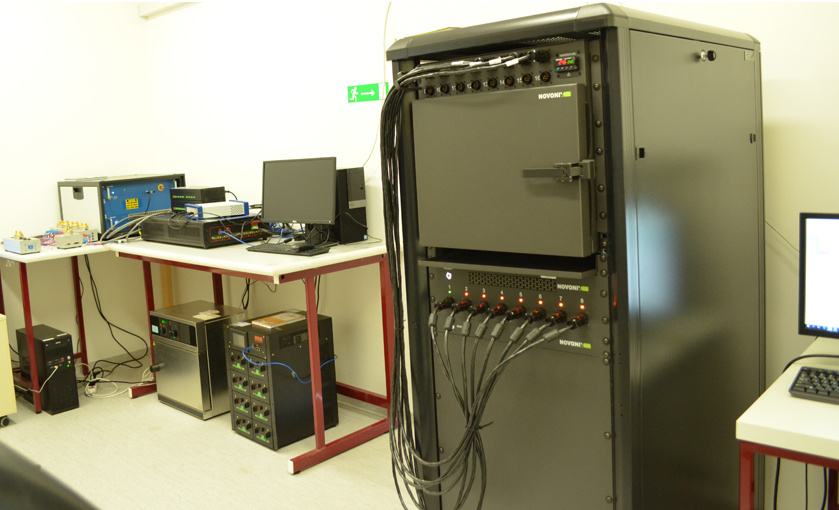
The electrochemical energy storage laboratory offers facilities for the development and preparation of materials that are tested as electrodes for batteries and supercapacitors. There are 24 channels from three cycler units (Biologic BCS-810, Arbin and Novonix) connected to climate chambers (10–60oC). Cyclic voltammetry and electrochemical impedance spectroscopy (EIS) measurements can be also performed. Measurements can be performed in coin cells or split test cells with reference electrodes.
Contact persons:
- Prof. Michal Otypeka, michal.otyepka@upol.cz, +420 58 563 4764 (4756)
- Aristeidis Bakandritsos, Ph.D, a.bakandritsos@upol.cz, +420 585 634 959
Laboratory of Techniques for Analyses in External Magnetic Fields
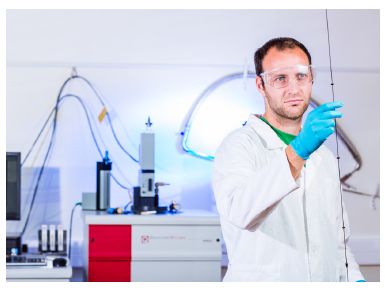
The laboratory offers services for the study of inorganic and organic spin-active materials, their magnetic properties, spin interactions and coordination environment. Also offers instrumentation for liquid and solid-state nuclear magnetic resonance and for studying the thermal properties and thermal decomposition of materials.
Equipment:
- Electron Paramangnetic Resonance
- Mössbauer Spectroscopy
- Physical Properties Measurement System (PPMS)
- Simultaneous Thermal and Evolved Gas Analysis (TGA-MS)
- Nuclear Magnetic Resonance
X-ray Laboratory for Structural, Phase and Surface Analysis
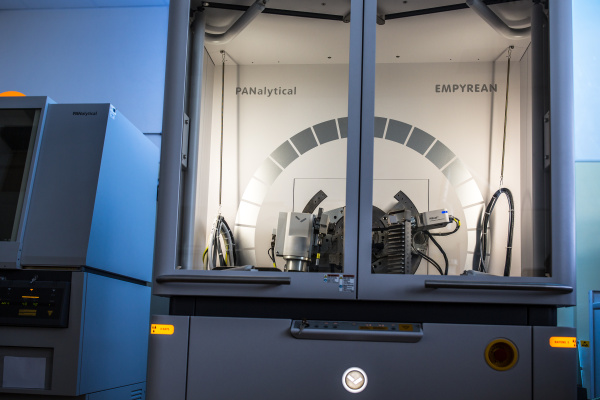
This group of techniques includes diffraction and spectroscopic methods employing X-ray radiation for complex structural, phase and surface chemical analyses of materials. The available techniques include an X-ray powder diffractometer (XRD), which allows phase analysis and processing samples at high temperatures, and an X-ray single crystal diffractometer for structural analysis of small solid crystals. X-ray photoelectron spectroscopy (XPS) may be used to analyze surfaces of solid samples composed of elements in the range from lithium to uranium with a depth of up to 10 nm.
Equipment:
Trace Analytical Laboratory
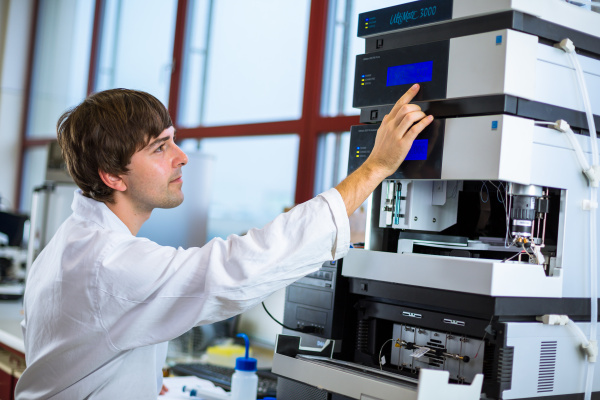
The trace analytical lab is equipped with chromatographic techniques coupled with mass spectrometry and as well as conventional detectors. Our lab provides solid-phase extractions techniques for volatile and non-volatile analytes. The analytical procedure covers the identification and determination of mostly organic compounds in a wide range of molecular masses and polarity.
Equipment:
Laboratory of Spectroscopic Methods
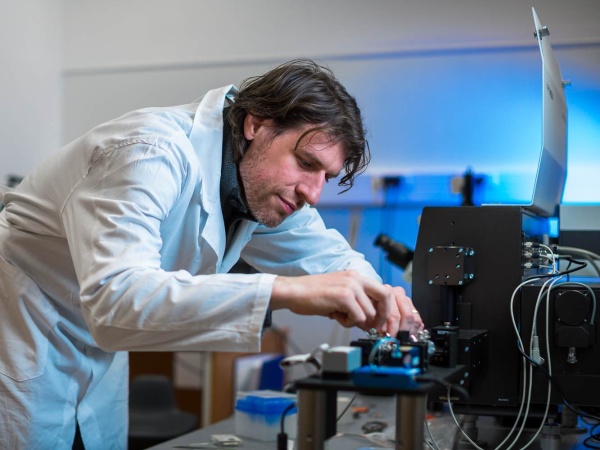
The laboratory of spectroscopy techniques is equipped with techniques based on the interaction of the sample with a light beam. Sample chemistry is consecutively based on the data obtained from the spectral absorption, refraction or scattering. The list of the techniques includes Raman microscopy and UV/Vis spectroscopy. The lab also contains unique technology based on the hyphenation of atomic force microscopy (AFM) and Raman microscopy. This technique allows the analysis of sample surface, where data on the sample topography, morphology, surface potential, elasticity or plasticity can be obtained, and at the same time, highly correlated Raman maps can be measured on the same sampling places.
Equipment:
Nanomaterials Toxicity Lab
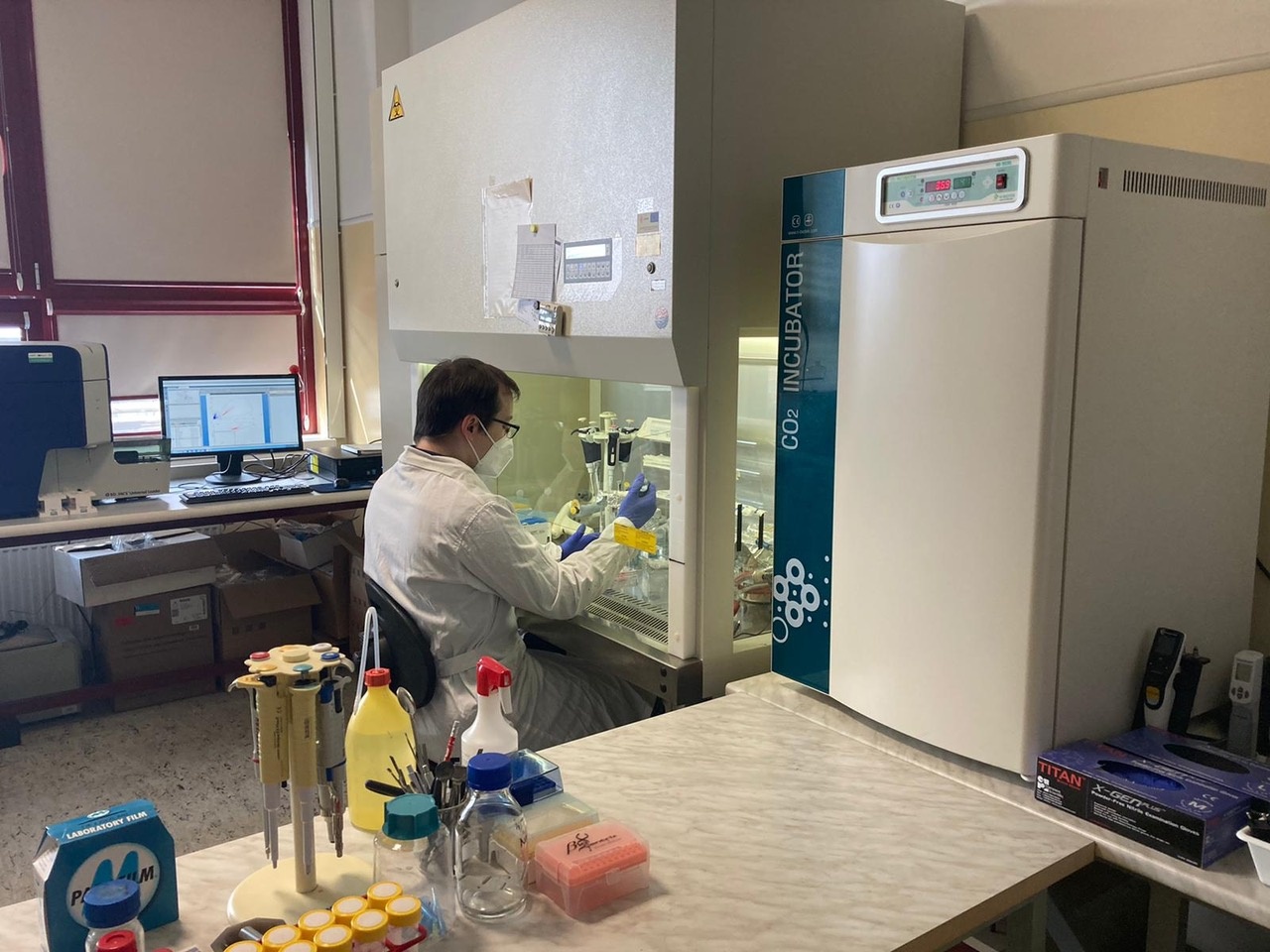
Scientists from the Nanomaterials Toxicity Lab perform a complex cytotoxicity analysis of nanomaterials utilizing modern methods of molecular biology and biochemistry. The information from such measurements allows an insight into the processes on cellular and subcellular level with the aim to explain the interaction of nanomaterials with cells and their fate in the cellular environment. The obtained results are very important since the application of nanomaterials is rapidly growing in the commercial sphere.
Equipment:
- Flow Cytometry (BD FACSVerse™)
- Optical Microscopy (Olympus IX 70) with Fluorescent Mode
- Reader for Cell Culture Microplates (Tecan Infinite)
- Flow Box
- Incubator for Cells
- Water Bath with Heating
- Water Ultrasound Bath
- Cell Counter
- UV Transluminator with Cooled Camera
List of cytotoxicity assays:
- Oxidative stress
- Reactive oxygen species (ROS) generation
- Antioxidant enzymes activity
- MTT test
- Viability/cytotoxicity
- Proliferation
- Cell cycle analysis
- Mitochondrial membrane potential analysis
- Genotoxicity
- Cellular uptake mechanism analysis
- Protein expression analysis
- Hemolysis
Laboratory for the Analysis of Size and Surface Properties of Materials
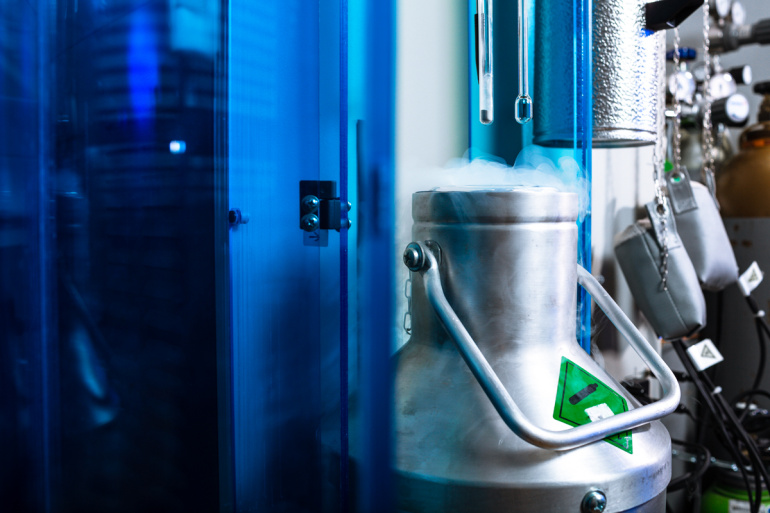
The techniques gathered in this laboratory enable to determine surface energy and its distribution, particle size distribution and their zeta potential. The laboratory also enables to study suface area properties together with the pore-size distribution characteristics of powder materials.


